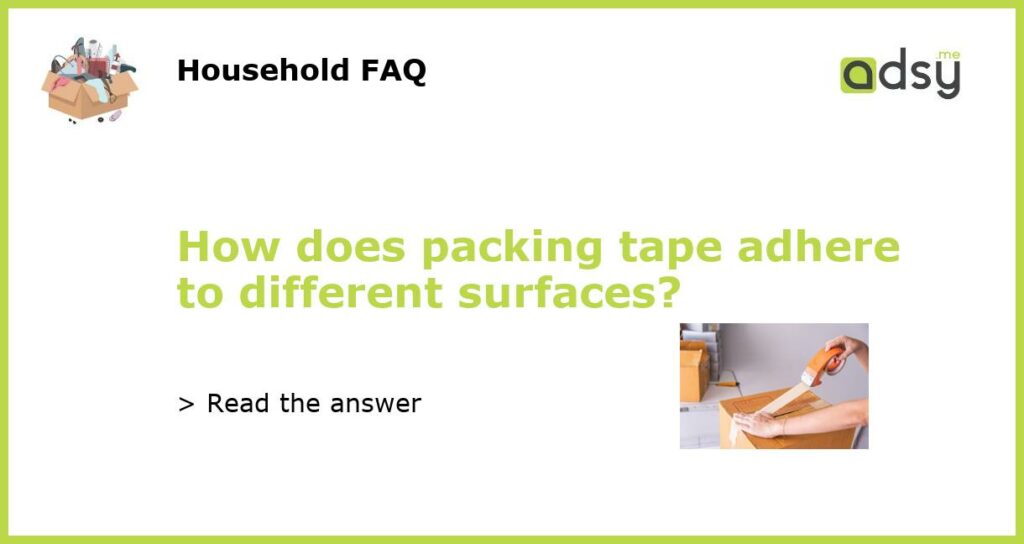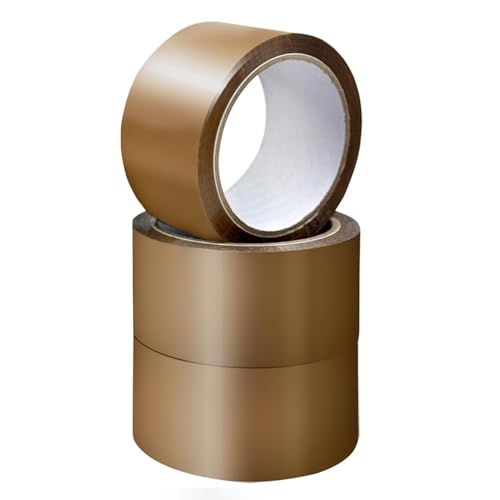How does packing tape adhere to different surfaces?
Packing tape is a commonly used adhesive material that is typically used to secure packages for shipping or storage. It is designed to adhere to a wide variety of surfaces, including cardboard, plastic, and metal. The adhesive strength of packing tape can vary depending on the specific materials it is adhering to, and it is important to choose the right type of tape for the job. In this article, we will explore the science behind how packing tape adheres to different surfaces.
The science behind packing tape adhesive
At its core, packing tape adhesive is a type of pressure-sensitive adhesive (PSA). This means that it adheres to surfaces through the application of pressure, rather than through a chemical reaction. The adhesive layer of packing tape is typically made from a combination of rubber or acrylic polymers and a tackifier, which is a substance that increases the adhesion of the tape.
When pressure is applied to the tape, the adhesive layer is compressed, allowing it to come into contact with the surface it is being applied to. This creates a bond between the tape and the surface, holding the tape in place. The adhesive in packing tape is designed to provide a strong bond that can withstand the stresses of shipping and handling.
Adhesion to different surfaces
Packing tape is designed to adhere to a wide range of surfaces, including cardboard, plastic, and metal. The type of surface can affect the adhesive strength of the tape and how long it will hold. For example, cardboard surfaces are typically more porous than plastic or metal surfaces, which can make it easier for the tape adhesive to bond with the cardboard fibers.
The adhesive used in packing tape is formulated to provide a strong bond with a variety of surfaces. It is important to choose the right type of tape for the specific surface you are working with. Some tapes are designed specifically for certain surfaces, such as heavy-duty tapes for metal or reinforced tapes for cardboard.
Factors affecting adhesive strength
There are several factors that can affect the adhesive strength of packing tape on different surfaces. One key factor is the surface cleanliness. The adhesive layer of packing tape needs to come into direct contact with the surface for optimal adhesion, so any dirt, dust, or grease on the surface can interfere with the bond.
The temperature can also affect the adhesive strength of packing tape. Extreme heat or cold can cause the adhesive to soften or harden, which can weaken the bond. It is important to store and use packing tape within the recommended temperature range for optimal performance.
Tips for optimal adhesion
To ensure optimal adhesion of packing tape to different surfaces, there are a few tips to keep in mind:
- Clean the surface thoroughly before applying the tape, removing any dirt, dust, or grease.
- Choose the right type of tape for the specific surface, such as heavy-duty tape for metal or reinforced tape for cardboard.
- Apply pressure evenly to the tape to ensure good contact with the surface.
- Avoid extreme temperatures that can affect the adhesive strength.
- Store the tape in a cool, dry place to maintain its adhesive properties.
By following these tips, you can ensure that your packing tape adheres securely to different surfaces, providing a reliable and strong bond for your packages.






